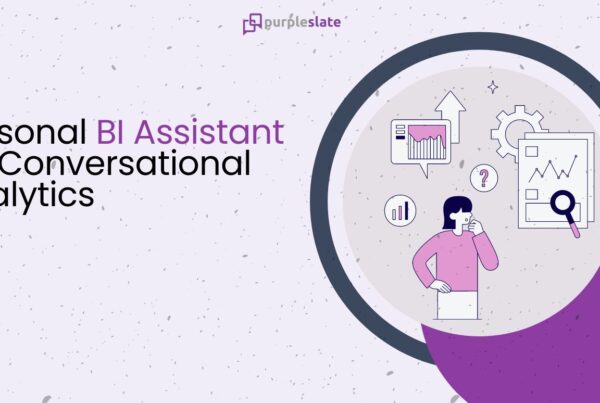
Introduction
Being a polyglot is a desirable trait in countries where different cultures collide to form an amalgamated yet cohesive unit. Now in the informal school of learning a language one of the first things probably anyone learns is, wait for it, cusswords, slurs, and more. Call it human weakness or a practical joke, but even if you meet new friends outside of your cultural sphere, they tend to teach you the “bad words” of their language first. Now comes the challenge, humans in their effort to “teach” and interact with advanced AI endeavors like the Generative AI, tend to indulge in casual slurs or profane remarks in their conversations. However, if you notice keenly enough you will see that these Large Language Models understand profanity in the context the word was used and counter with such a polite demeanor as though it was a high-ranking butler from an aristocratic pedigree. Ever wondered how?
In this guide, we will speak about how Large Language Models stand at the forefront, not only deciphering complex linguistic structures but also navigating the intricate nuances of social discourse across online platforms.
The Four Pillars of Responsible Profanity Handling
Every letter of conversation with an LLM is scrutinized to ensure it falls under the acceptable ethical norms of engagement. To achieve this feat, Large Language Models take the help of the four pillars namely Detection, Filtering, Alerting, and User Guidelines. We will delve deeper into each of these pillars in detail in the oncoming sections.
Detection
Detecting profanity is akin to spotting a needle in a haystack, albeit in the vast expanse of linguistic data. At the core of detection is the process of meticulous detection of data and training it to be proficient in identifying profanity. In simple words, practice, practice, and more practice makes the LLM better at profanity detection. Noteworthy examples include the implementation of Natural Language Processing (NLP) techniques like sentiment analysis and pattern recognition.
Filtering
Filtering profanity is the process of automatically flagging profane content. It requires a multifaceted approach, involving both machine and human intervention. This approach ensures nuanced understanding and contextual relevance. A version of filtering is already available across multiple platforms including online games, social channels, and more which is trained to mask or obfuscate such content.
Alerting and Reporting
LLMs can be used to monitor user-generated content in real-time. When instances of toxicity and profanity are detected, they can trigger alerts for human moderators to review and take appropriate actions such as content removal or user suspension. Additionally, they can assist in generating reports on the prevalence of profanity within online communities.
User Guidance
Empowering users to navigate the digital terrain responsibly is paramount. LLMs can generate user guidelines and educational materials regarding acceptable behavior and community standards. These resources can help educate users about the consequences of engaging in profanity and encourage respectful discourse.
While Large Language Models can assist in handling profanity, it’s important to note that they are not perfect and may sometimes misclassify content. Human moderation remains crucial for ensuring accurate and fair content management. Additionally, continuous refinement and updating of LLMs are necessary to adapt to evolving online behaviors and language usage.
Now let us learn in depth regarding each of the four pillars of responsible profanity handling.
Training LLMs for Detection: A Prelude to Prevention
Detection in profanity handling by Language Models (LLMs) refers to identifying instances of profanity or inappropriate language within text data generated by the model. It is a crucial component of profanity filtering and moderation systems, enabling LLMs to recognize and act on content that violates community guidelines or standards. Detection training for LLMs follows a step-by-step approach outlined below.
- Data Collection: Gather a diverse dataset containing examples of profanity from various sources, including social media, forums, news articles, and curated datasets. The dataset should cover a wide range of languages, topics, and contexts to ensure robust model performance.
- Data Labeling: Annotate each instance in the dataset as either containing profane words or non-profane words. Human annotators are typically employed to review and label the data accurately, ensuring consistency and reliability in the annotations.
- Feature Engineering: Features are extracted from the text data to represent linguistic patterns associated with profanity. These features may include word embeddings, n-grams, syntactic features, and semantic features.
- Model Selection: Various machine learning models, including neural networks, support vector machines (SVMs), and ensemble methods, can be considered for profanity detection. Neural network architectures like recurrent neural networks (RNNs) or transformer-based models like BERT (Bidirectional Encoder Representations from Transformers) are commonly used due to their effectiveness in natural language processing tasks.
- Model Training: The selected model is trained on the labeled dataset using techniques like gradient descent to minimize a loss function. During training, the model learns to distinguish between profane and non-profane text based on the provided features.
- Validation and Fine-Tuning: The trained model is evaluated on a separate validation dataset to assess its performance. Fine-tuning may be performed by adjusting hyperparameters or updating the model architecture to optimize performance further.
- Testing and Evaluation: The final model is tested on a held-out test dataset to evaluate its generalization performance. Metrics such as accuracy, precision, recall, and F1-score are typically used to assess the model’s effectiveness in detecting profanity.
- Iterative Improvement: The model may undergo iterative improvement based on feedback from real-world deployment and ongoing monitoring. This includes retraining the model with updated data and refining the detection algorithms to adapt to evolving patterns of profanity.
Training Large Language Models to detect profanity requires careful curation of data, feature engineering, model selection, and iterative refinement to develop effective and robust detection systems.
LLM driven Alerting and Reporting: Vigilance in Real-Time
Large Language Models (LLMs) can be equipped to alert and report instances of profanity through several mechanisms. When instances of profanity are detected, they can trigger alerts for human moderators to review and take appropriate actions such as content removal or user suspension. Additionally, they can assist in generating reports on the prevalence of profanity by users while engaging in their platforms.
- Real-time Detection: LLMs can continuously analyze user-generated content in real-time, flagging instances that exhibit characteristics of profanity. This detection process can occur as users interact with online platforms, such as social media, forums, or chat applications.
- Automated Reporting: Large Language Models can be programmed to automatically report flagged instances of profanity to designated administrators or moderators. These reports may include details such as the content, timestamp, user ID, and context to facilitate swift action.
- Contextual Analysis: LLMs are trained to understand context, which enables them to recognize nuances in language use. They can analyze the surrounding context of flagged content to determine the severity and intent of the profanity and provide additional context in their alerts and reports.
- Severity Assessment: LLMs can assist in assessing the severity of profanity based on various factors such as the language used, targeted demographics, and potential impact on affected individuals. This information can be included in reports to prioritize moderation efforts.
- Documentation and Audit Trail: LLMs can generate documentation and maintain an audit trail of reported instances of profanity, including actions taken by moderators and outcomes. This documentation helps ensure accountability and transparency in content moderation processes.
- User Reporting: This is not a regular mechanism. Certain LLMs can also facilitate users to flag content as inappropriate. This will be useful in community platforms and social channels majorly where LLMs are expected to play a wider role in the future.
The role of humans in this phase is phenomenal as they must play an active role in continuously educating LLMs and moderating the type of content it handles in its platform.
How do LLMs put Profanity Handling to Practice?
We discussed many methodologies or steps by LLMs to detect, filter, report, and educate users on profanity handling. But how does it happen in real-time. What exactly does an LLM do, when it’s faced with an aggressive user bent on using cusswords? It’s quite simple and subtle.
Response Redirection
Instead of engaging with the profane content directly, LLMs will attempt to redirect the conversation to a more appropriate topic or ask for clarification on a different aspect of the user query. For example, if an LLM encounters an aggressive user it will redirect the conversation to a different tone.
User: “This shitty website is terrible!”
LLM: “I understand you’re frustrated. Let’s focus on how we can improve your experience. Can you tell me more about the specific issues you’re encountering?”
Reminder of Guidelines
LLMs may gently remind the user of the community guidelines or terms of service that govern their interactions and encourage the users to maintain a respectful and constructive dialogue. A simple example would be to calm down the aggressive user with a gentle message.
User: “This shitty website is terrible!”
LLM: “I understand you’re frustrated, but let’s remember to keep our language respectful and constructive as per our guidelines.”
These are just a few ways in which LLMs will try to steer the conversation in a more mutually respectful tone and encourage users to avoid using profanity. The four pillars mentioned earlier will be functioning the backend actively flagging such content to ensure better handling in the future.
Closing Notes: The Future of LLMs in Profanity Handling looks Promising
The trajectory of Large Language Models in profanity handling is transformative. With rapid advancements in machine learning algorithms and data acquisition strategies, the landscape of profanity detection and filtering is on the brink of a revolution. Here’s a glimpse into what the future holds for LLMs in profanity handling.
Augmented Detection and Filtering
As machine learning algorithms continue to evolve, LLMs will become increasingly adept at detecting and filtering out profanity with greater accuracy and efficiency. Techniques such as deep learning and reinforcement learning will be harnessed to enhance the model’s understanding of subtle linguistic nuances, leading to more precise identification of inappropriate language.
Real-Time Contextual Understanding
The future of LLMs lies in their ability to grasp context in real-time, enabling them to discern the intent behind language usage. By analyzing not just the words themselves but also the broader context in which they are used, LLMs will be able to accurately gauge the severity and appropriateness of language, thus preempting toxicity before it escalates.
Anticipatory Moderation
LLMs will transition from reactive to proactive moderation, anticipating and mitigating instances of profanity before they manifest. By leveraging predictive analytics and behavioral insights, these models will be able to identify patterns indicative of potential profanity and take preemptive measures to address them, thereby fostering a safer and more inclusive online environment.
Ethical Framework Enrichment
Collaborations with interdisciplinary experts, including linguists, ethicists, and psychologists, will enrich the ethical framework underpinning profanity handling by LLMs. By incorporating diverse perspectives and ethical considerations into their design and development, LLMs will serve as ethical guardians in the digital sphere, upholding principles of fairness, transparency, and respect for user privacy.
LLMs can verily evolve into digital stewards in the future, proactively flagging and correcting online behavior. The applications of Generative AI and LLMs in this field are endless.




